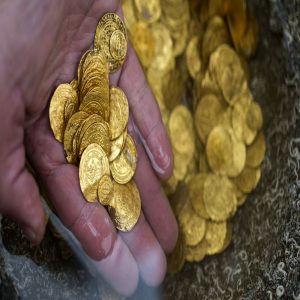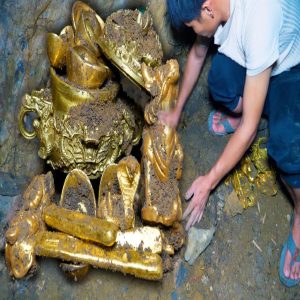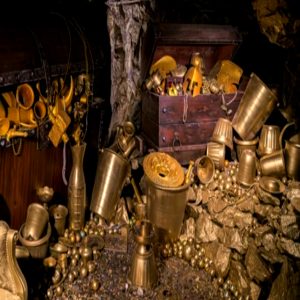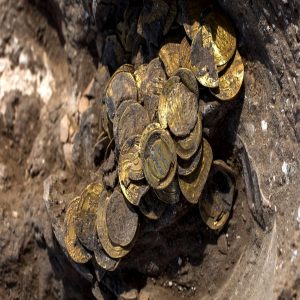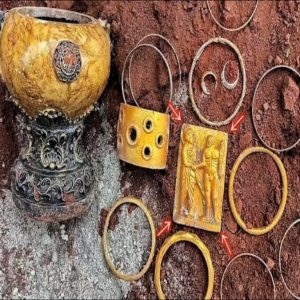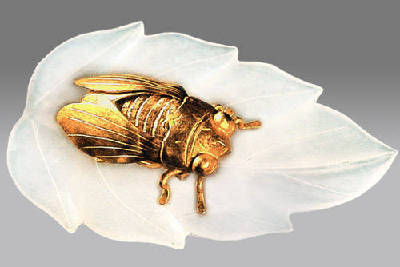 |
| Gold Cicada on a Jade Leaf |
Ming Dynasty (1368-1644)
Nanjing Museum
On a crystal-like jade leaf sits a vividly crafted, gold cicada. The object is exquisitely shaped and original in workmanship, and is a perfect example of gold-jade combination sculptures.
Among the 4.2 million pieces at the Nanjing Museum, the gold cicada on a jade leaf stands alone for its art and craftsmanship. A vivid cicada with a golden sheen sits on a glittering and translucent leaf. The wings of this cicada are 1.7cm long, about 0.8cm wide, and only 0.2mm thick – like two little pieces of gold organdie. The leaf is 5.2cm long, 3.2cm wide, and 0.2cm thick, and is made from a piece of first-class Hotan jade from Xinjiang.

The cicada is a very old symbol. It appeared as early as the old ritual texts as an animal symbolizing rebirth. Thus, in ancient times, it occurs as a small piece of sculpture, which is placed on the tongue of the dead, in the hope that the person will be reborn. Some scholars believe it may have had additional meanings, such as “harvest time,” “autumn” or “resurrection.”
The gold cicada on a jade leaf, however, has a special meaning. In 1954, this object was found near the head of a body in a tomb of the Ming Dynasty; together with it were two silver hairpins and four headdresses, showing that it is a kind of hairpin used by women to fasten their hair.
The gold cicada on a jade leaf is called “jin chan yu ye” in Chinese. “Chan” means cicada, and cicada is also called “zhiliao” in China, “zhi” as the abbreviation. So the object can also be called “jin zhi yu ye,” which is a homonym with a famous Chinese idiom, meaning “one of noble birth,” used to praise young ladies. For women and girls of ancient China, there was no praise higher than “jin zhi yu ye.”
This piece is a masterpiece of the 2nd half of the 15th century, and is also the only one of its kind excavated in China.

